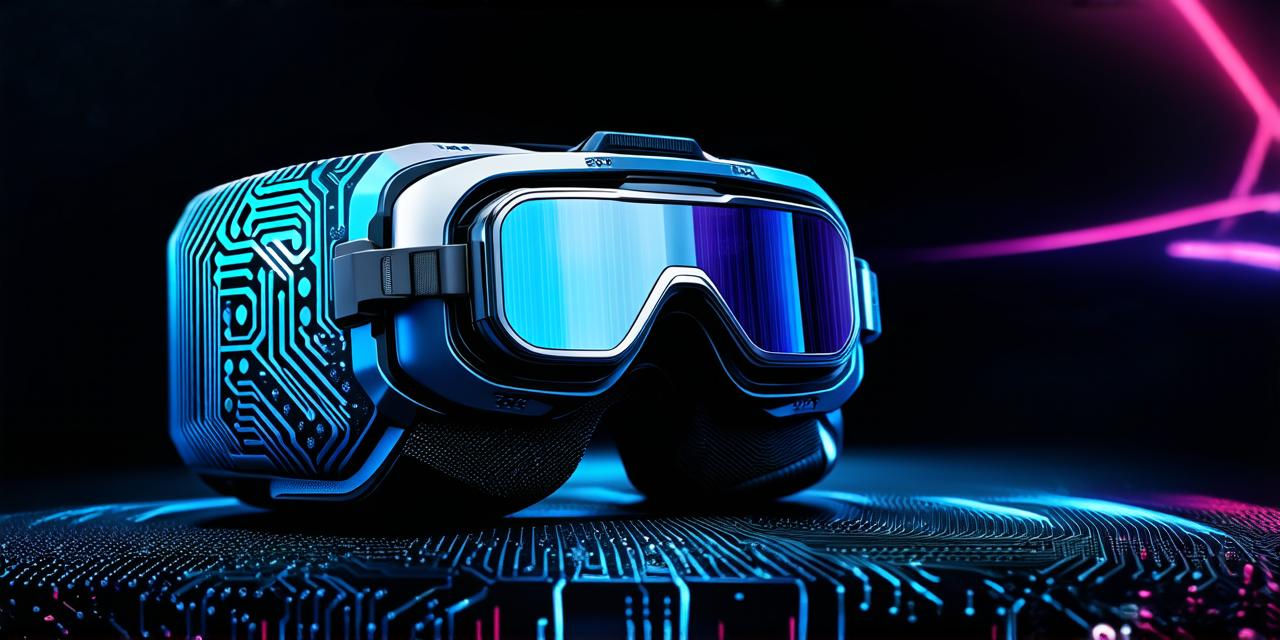Virtual reality (VR) technology is rapidly evolving and becoming increasingly popular in various industries such as gaming, education, healthcare, and entertainment. Virtual reality goggles are a critical component of VR systems that allow users to experience immersive virtual environments.
Types of Virtual Reality Goggles

There are several types of virtual reality goggles available in the market, including:
- Head-Mounted Displays (HMDs)
Head-mounted displays are the most common type of VR goggles that allow users to experience virtual environments by placing a display on their head. Examples of HMDs include Oculus Rift, HTC Vive, and PlayStation VR.
- Wireless VR Headsets
Wireless VR headsets are a newer type of VR goggles that do not require cables to connect the headset to a computer or console. Examples of wireless VR headsets include Samsung Gear VR and Google Cardboard.
3. Augmented Reality (AR) Headsets
Augmented reality headsets are designed to overlay digital information on top of the real world. These headsets allow users to interact with virtual objects in their physical environment. Examples of AR headsets include Snapchat Spectacles and Vuforia Smart Glasses.
Factors to Consider When Choosing a Virtual Reality Goggle
When choosing a virtual reality goggle, there are several factors to consider, including:
- Field of View
Field of view refers to the amount of visual information that a user can see at any given time. A wider field of view allows for a more immersive experience, but may also lead to motion sickness in some users.
2. Resolution and Display Quality
The resolution and display quality of a VR goggle are important factors to consider when choosing a device. Higher resolution displays provide a clearer and more realistic image, while higher refresh rates reduce motion blur and improve the overall experience.
3. Comfort and Fit
Comfort and fit are essential when choosing a virtual reality goggle. The headset should be comfortable to wear for extended periods of time and should fit well on the user’s head to prevent any discomfort or motion sickness.
4. Connectivity and Compatibility
Virtual reality goggles should have compatibility with the user’s computer or console, as well as connectivity options such as Wi-Fi or Bluetooth.
Impact of Virtual Reality Goggles on VR Development
Virtual reality goggles are a critical component of virtual reality development, and their impact on the industry is significant. The following are some ways that VR goggles have influenced VR development:
- Enhanced Immersion
Virtual reality goggles allow users to experience immersive virtual environments in a way that was previously not possible. This enhanced immersion has led to more engaging and realistic experiences for users, which in turn has increased the adoption of VR technology.
2. Reduced Costs
Virtual reality goggles have become increasingly affordable over the years, making them accessible to a wider range of users. This has reduced the cost barriers to entry for VR development and has led to more innovation in the industry.
3. Improved User Experience
The advancements in virtual reality goggle technology have improved the overall user experience. Higher resolution displays, wider fields of view, and better connectivity options have all contributed to a more seamless and immersive experience for users.
Case Studies in Virtual Reality Goggle Development
There are many case studies that demonstrate the impact of virtual reality goggles on VR development. Here are a few examples:
- Google Daydream
Google Daydream is a wireless VR headset that was launched in 2016. The device has been well-received by users and developers alike, with many praising its sleek design and user-friendly interface.
2. Samsung Gear VR
Samsung Gear VR is a wireless VR headset that was launched in 2015. The device has been widely adopted by gamers and developers, with many using it to create immersive gaming experiences.
3. Oculus Quest
Oculus Quest is a wireless VR headset that was launched in 2019. The device has been praised for its affordability and ease of use, making it an attractive option for both consumers and developers.
Conclusion
Virtual reality goggles are a critical component of virtual reality development, providing users with immersive virtual environments that can be used in a variety of industries. With advancements in technology, virtual reality goggles have become more affordable and accessible, leading to increased adoption of VR technology. By considering factors such as field of view, resolution, comfort, and connectivity when choosing a virtual reality goggle, developers can create engaging and realistic experiences for users. The impact of virtual reality goggles on VR development is significant, and we can expect to see even more innovation in the industry in the future.
FAQs
- What are some examples of virtual reality goggles?
Some examples of virtual reality goggles include Oculus Rift, HTC Vive, and Samsung Gear VR. - How do virtual reality goggles work?
Virtual reality goggles work by presenting users with a visual display that simulates a virtual environment. Users wear the goggles on their head and can interact with the virtual environment using hand-held controllers or other input devices. - What are some factors to consider when choosing a virtual reality goggle?
Some factors to consider when choosing a virtual reality goggle include field of view, resolution, comfort, and connectivity.
